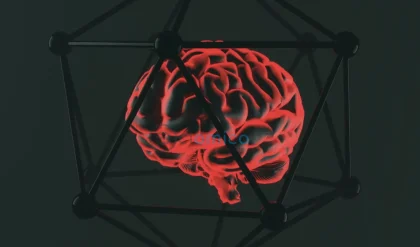Researchers at the University of British Columbia (UBC) are tackling a significant challenge in the realm of quantum networking with their innovative device that can seamlessly convert signals between microwave and optical formats. This breakthrough could potentially facilitate communication between quantum computers over long distances, allowing them to operate as a cohesive network rather than isolated units.
The proposed technology acts as a “universal translator” for quantum computing systems, converting up to 95% of a signal with minimal noise interference. Remarkably, the device is compact enough to be fabricated on a silicon chip, the same material prevalent in conventional computer technology. According to Mohammad Khalifa, the lead author of the study conducted during his doctoral research at UBC’s Faculty of Applied Science and the Blusson Quantum Matter Institute, this development is akin to finding an exceptionally accurate translator that maintains the integrity of the message without introducing extraneous noise. Khalifa emphasized the importance of this device in preserving quantum connections between distant particles, which is crucial for creating a functional quantum network.
Quantum computers use microwave signals to process information; however, transmitting this data over long distances requires converting it into optical signals that can traverse fiber optic cables. Unfortunately, these optical signals are highly sensitive, and even minor disturbances during conversion can disrupt their integrity. This poses a significant dilemma for entanglement, the fundamental phenomenon that allows quantum computers to link two particles regardless of the separation distance, a property famously dubbed “spooky action at a distance” by Einstein. The UBC team’s device, detailed in the journal npj Quantum Information, could enable reliable long-distance quantum communication while safeguarding these essential entangled connections.
The novel microwave-optical photon converter developed by the research team features a design that can be produced on a silicon wafer. The key innovation lies in the inclusion of engineered flaws, specifically magnetic defects, that are purposefully embedded in the silicon to modify its properties. When the device is precisely tuned, it allows electrons in these defects to transform one type of signal into the other without energy loss, thereby reducing the instability often associated with conversion methods.
Additionally, the device operates efficiently on an incredibly low power level, consuming only millionths of a watt. The research team has proposed a practical design that integrates superconducting components, which are materials capable of perfect electrical conductivity, with the specially crafted silicon.
While the research remains in a theoretical phase, it signifies a crucial advancement in developing quantum networking technologies. Senior author Dr. Joseph Salfi, an assistant professor in the Department of Electrical and Computer Engineering at UBC, noted that while a fully functional quantum internet is not around the corner, this breakthrough eliminates a major barrier. The ability to reliably transmit quantum information across urban areas has been a longstanding challenge, but with silicon-based converters built using current chip fabrication techniques, integration into existing communication systems becomes feasible.
In the wider context, the evolution of quantum networks holds immense promise. They could enable unparalleled online security, indoor GPS capabilities, and even address complex challenges such as developing new pharmaceuticals or enhancing weather prediction models with previously unattainable accuracy.
Reference:
- M. Khalifa, P. S. Kirwin, Jeff F. Young, J. Salfi. Robust microwave-optical photon conversion using cavity modes strongly hybridized with a color center ensemble. npj Quantum Information, 2025; 11 (1) DOI: 10.1038/s41534-025-01055-4







